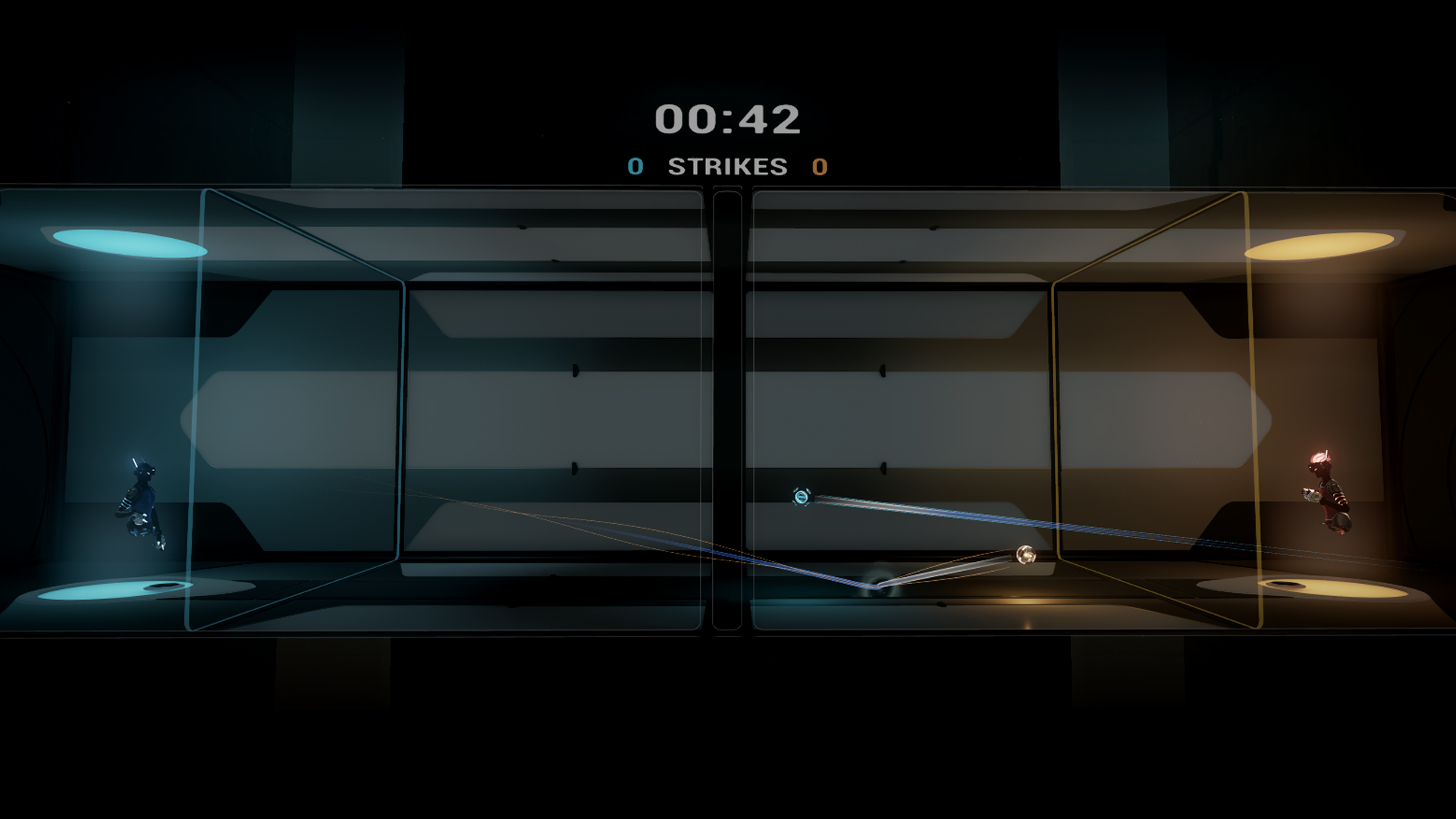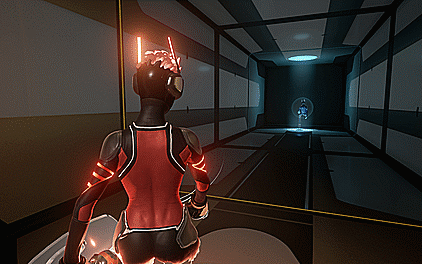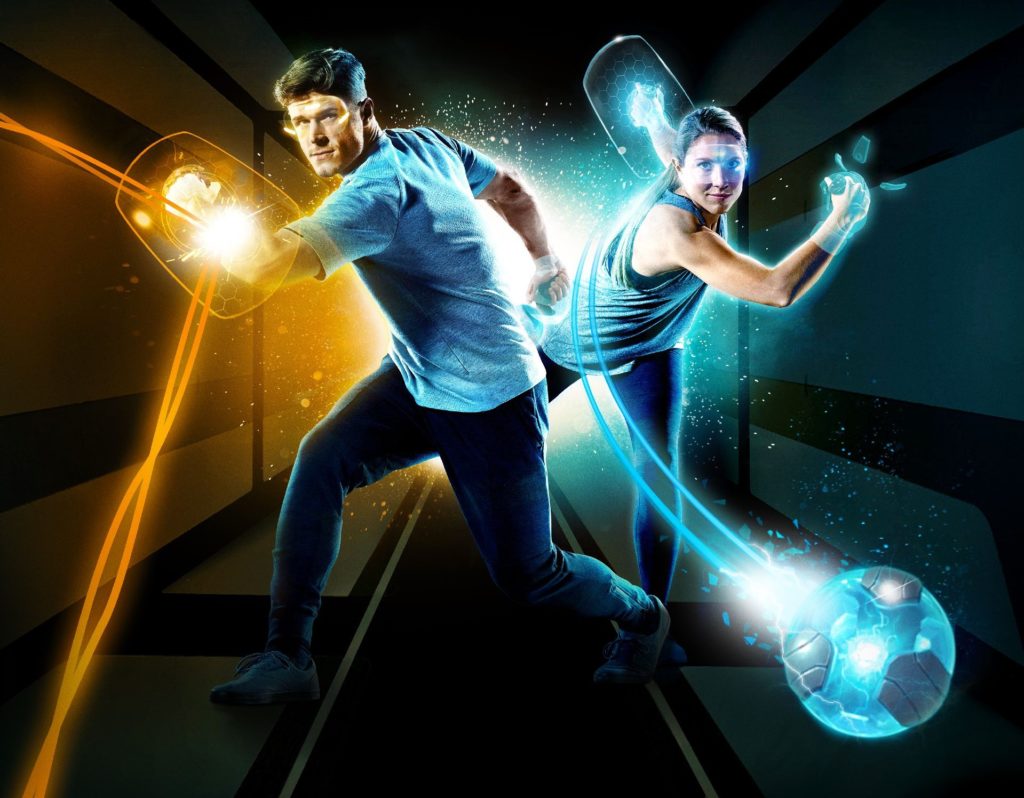CCP, creators of EVE Online, has been a part of the current VR culture since Oculus first started to become a household name. Its first entry into the market, the space combat flight sim EVE Valkyrie, blew people away and showed the breathtaking potential for virtual reality. That was followed by the mobile VR game, Gunjack, which is also set in the EVE universe. Now CCP is ready to take things to the next level by creating an all-new type of VR game—one that isn’t necessarily tied to the EVE universe. That game is Sparc, which was revealed at this year’s Game Developers Conference and is expected to release later this year for Oculus Rift, HTC Vive and PlayStation VR.
Sparc is a virtual reality experience that feels both familiar and new at the same time. It’s inspired by real-world sports such as tennis, racquetball and fencing to create a new kind of competitive experience that’s closer to being a traditional physical sport than a video game. In it, two people enter an enclosed arena and are tasked with hurling orbs in an effort to hit the other player while dodging their opponent’s moves. Players can bounce the orbs off the walls, floor and ceiling or “return” an opponent’s ball by either using a shield to deflect it or knuckle punching it.
Cameron Payne, brand manager for Sparc, told [a]listdaily that the development team regarded the game as a physical sport, just like tennis, and that the hope is players will see it the same way. He was joined by Morgan Godat, executive producer and studio manager at CCP, to talk about how Sparc could help transform VR into a sporting event.

How would you describe Sparc?
[Payne]: We describe it as a virtual sport, or a vSport. It’s a physical, standing, VR game where people compete and connect online. Thinking of it as a sport pervades everything about the game. When you play, you’re you—you’re not Cyber Knight 3000 playing some future sport. This is a real sport, and just like you’d have a racket for playing tennis, your VR setup is your sports equipment.
This is also the first game from CCP that’s not set in the EVE universe. You can have EVE costume customizations, but the game isn’t set in that universe. This is a sport between real people set in a virtual space.
What inspired the development of Sparc?
[Godat]: In 2014, we started the team in Atlanta and set them loose on the lofty goal of figuring out what comes next in VR. Head tracking wasn’t really a thing at that point, the Oculus Rift DK2 was just coming online, and EVE Valkyrie locked in the experience of sitting down with a headset and controller to fly a ship. We did some experiments with the controller and different types of vehicles, and with each one we said, “this would be a great feature for Valkyrie.”
So, we started developing with the Microsoft Kinect, which let me look down and see a version of my body along with other people in the space with me, and that was brilliant. So, we wanted the game to be your actual space mixed with these virtual objects.
The question then became whether or not we could take a full-body VR experience and apply motion controllers, like those on the HTC Vive, PlayStation VR and Oculus Touch. We showed a prototype called Project Arena at EVE Fanfest 2016, and the fans gave us our answer: “fuck, yeah!”

Will the game use voice communication?
[Godat]: Absolutely. People meeting face-to-face and talking to one another is critical. We want people to show up and have conversations. One of the first things that we do at the start of a match is knuckle up, where people are face-to-face. We’re trying to reinforce the fact that you’re human beings playing against each other, so let’s see some sportsmanlike conduct. There’s a creepy level of humanity to facing somebody else and talking to them. We’re able to express more humanity through this technology than we can through a touchscreen or monitor.
CCP’s core DNA is in getting people together with player-to-player interaction. They do it on a much different, grander scale than what we have in Sparc but that’s fine. EVE Online has been on the market for 15 years and a community has built up in that time. That’s the kind of thing we want for Sparc.
Are there going to be social features?
[Godat]: Yes. When you enter in the courtside space, you see a miniature court in front of you and players shrink down when they hop in. You can then loom over a court and watch a game. We want people to show up and hang out around the outside of the court because it’s a lot of fun to spectate and root for the player you want to win. Then you can queue up for the next match. It’s a social space, where people can meet up, talk, and establish a back-and-forth before getting into the competition.
Will Sparc launch with customization options for creating team uniforms?
[Godat]: If Sparc takes off and people really love it, then we’ll talk about teams. Doubles is a constant question that everybody always asks. But our goal with customization is in balancing out how much control we give to people. You’re going to be interacting with customization in a virtual reality space. It’s empowering to put articles of clothing on in VR and see them in a mirror with your emotions and actions. Even though you can’t customize the shape of these characters, you can change certain parts, like the color and clothing materials. We’re still figuring out how players can interact with that in a way that’s intuitive and makes sense.
Will the game include sponsored branding opportunities for uniforms and the arena?
[Godat]: We’re not going to force anything into it, but there’s no reason why a certain part of the court can’t be sectioned off for sponsors. The NCAA tournament has an emblem in the center of the field. Everything that maps into a sport can map into this court. If someone comes along and says they want the shields branded in a certain way, or have logos on their chests, that’s something we want to enable.

Do you think Sparc may be adopted as an eSport?
[Godat]: ESports are made by the players. It’s the equivalent of saying, “we’re going to make a video and it’s going to go viral.” It sounds cute, but it’s crazy. Players and the people watching are the ones who make something go viral, and they make the eSport. The question is whether there are people who are willing to commit the time and energy into playing this game so that companies outside of CCP are willing to create tournaments. Our goal is to create a sport, and that’s a pretty daunting thing.
What led to the decision separate Sparc from EVE Online?
[Godat]: At some point, even people inside the company are starting to ask, “can we make that not in EVE?” EVE has a well-established visual style to it, and there was never a question of whether or not we should do it. The question was whether it made sense. One of the things about EVE is that you’re playing a character in that universe. The players put on a different persona. In Sparc, you can have your avatar look however you want, but we still want you to think of it as you playing the sport.
What goes into promoting a VR game compared to a traditional one?
[Payne]: The beauty is in mixed reality, because we’re a standing game and not a mobile or seated game with a controller. We found that mixed reality is a very compelling way to quickly communicate what an experience is like. So, we’re going to take that to another level. I also think that communicating and marketing in VR is a cutting-edge field. These are things that CCP is learning how to do just like everybody else. There’s a lot that we’re discovering about what’s different about communicating and marketing VR games compared to regular games.


